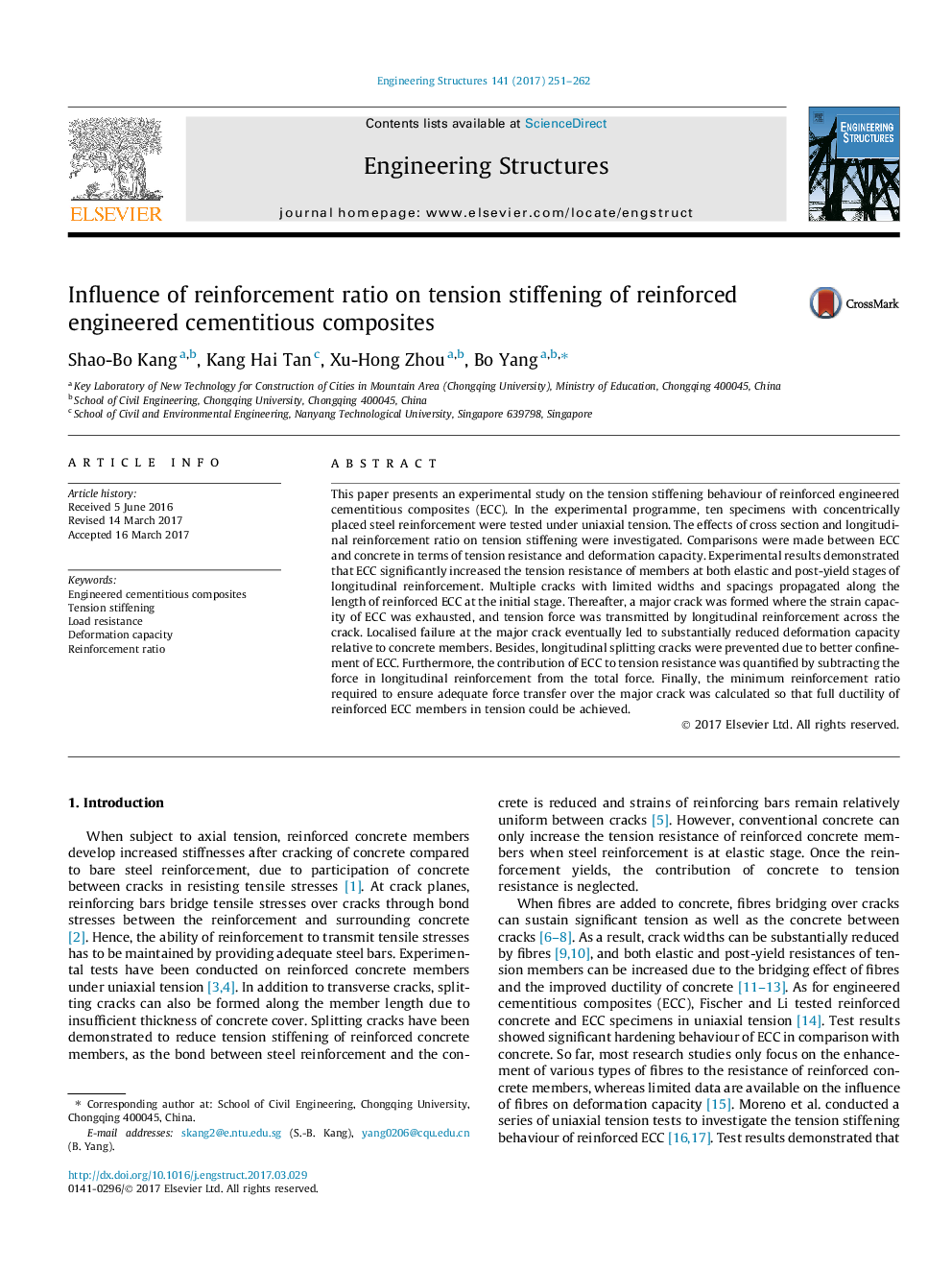| Article ID | Journal | Published Year | Pages | File Type |
|---|---|---|---|---|
| 4920247 | Engineering Structures | 2017 | 12 Pages |
Abstract
This paper presents an experimental study on the tension stiffening behaviour of reinforced engineered cementitious composites (ECC). In the experimental programme, ten specimens with concentrically placed steel reinforcement were tested under uniaxial tension. The effects of cross section and longitudinal reinforcement ratio on tension stiffening were investigated. Comparisons were made between ECC and concrete in terms of tension resistance and deformation capacity. Experimental results demonstrated that ECC significantly increased the tension resistance of members at both elastic and post-yield stages of longitudinal reinforcement. Multiple cracks with limited widths and spacings propagated along the length of reinforced ECC at the initial stage. Thereafter, a major crack was formed where the strain capacity of ECC was exhausted, and tension force was transmitted by longitudinal reinforcement across the crack. Localised failure at the major crack eventually led to substantially reduced deformation capacity relative to concrete members. Besides, longitudinal splitting cracks were prevented due to better confinement of ECC. Furthermore, the contribution of ECC to tension resistance was quantified by subtracting the force in longitudinal reinforcement from the total force. Finally, the minimum reinforcement ratio required to ensure adequate force transfer over the major crack was calculated so that full ductility of reinforced ECC members in tension could be achieved.
Keywords
Related Topics
Physical Sciences and Engineering
Earth and Planetary Sciences
Geotechnical Engineering and Engineering Geology
Authors
Shao-Bo Kang, Kang Hai Tan, Xu-Hong Zhou, Bo Yang,
